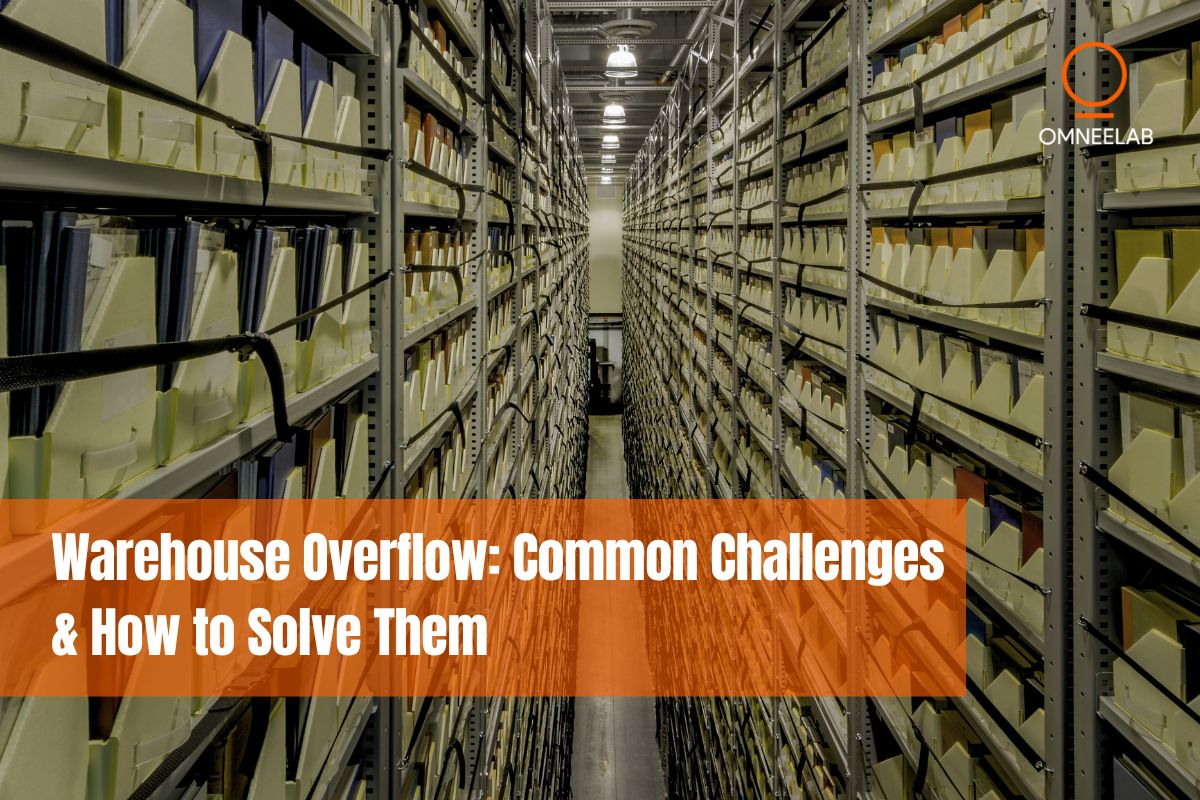Introduction
Warehouse overflow is a common challenge many businesses face, especially during periods of high demand, such as peak seasons or unexpected surges in orders. This can lead to significant inefficiencies, operational disruptions, and increased costs. Navigating these challenges effectively requires a comprehensive understanding of both the causes of overflow and the strategies that can help mitigate it. In this article, we’ll explore the key issues associated with warehouse overflow and practical solutions to address them.
Outline for the Article
| Main Topic | Subtopics |
|---|---|
| 1. Introduction | Importance of efficient warehouse management and the impact of overflow |
| 2. Causes of Warehouse Overflow | Market demand fluctuations, inadequate forecasting, poor inventory management |
| 3. Consequences of Warehouse Overflow | Increased costs, delays in order fulfillment, loss of productivity |
| 4. Identifying Overflow Early | Signs of impending overflow and proactive measures |
| 5. Impact on Order Fulfillment | How overflow disrupts shipping and customer satisfaction |
| 6. Space Utilization Strategies | Maximizing current warehouse space with creative solutions |
| 7. Technology for Managing Overflow | Warehouse Management Systems (WMS), inventory control, and real-time tracking |
| 8. Demand Forecasting Techniques | Tools and strategies for more accurate demand predictions |
| 9. Lean Inventory Management | Just-in-time inventory and buffer stock strategies |
| 10. Outsourcing Options | Utilizing third-party logistics (3PL) providers for overflow management |
2. Causes of Warehouse Overflow
Warehouse overflow typically arises from a combination of factors. Market demand fluctuations are one of the primary reasons, particularly during peak seasons, promotional events, or unanticipated spikes in sales. These surges can overwhelm the warehouse’s capacity if not anticipated and prepared for. Inadequate forecasting exacerbates the problem, as businesses may fail to accurately predict inventory needs, leading to stockpiling or shortfalls.
Another cause is poor inventory management. Without efficient tracking and organization systems, warehouses can quickly become cluttered, with products piling up in inappropriate locations, leading to overflow situations. This inefficiency results in operational delays and unnecessary costs.
3. Consequences of Warehouse Overflow
Warehouse overflow has several negative repercussions. One of the most immediate effects is the increase in costs, as businesses need to find additional storage space, often at premium rates. There’s also the cost of labor, as employees spend extra time sorting through the overflow and handling misplaced items.
Delays in order fulfillment are another consequence. When a warehouse is overstocked, it becomes more difficult to find and dispatch items efficiently, leading to longer lead times and unhappy customers. Furthermore, overflow causes a loss of productivity, as employees are forced to navigate a cluttered and chaotic environment, increasing the likelihood of errors.
4. Identifying Overflow Early
Recognizing the signs of overflow before it happens is crucial to minimizing its impact. Early indicators include increasing congestion in aisles, frequent backorders, and excess stock piling up in non-storage areas. By monitoring these signs and implementing proactive measures, such as adjusting inventory levels and optimizing warehouse layouts, businesses can prevent overflow from becoming a major issue.
5. Impact on Order Fulfillment
Overflow disrupts the smooth flow of order fulfillment. When warehouse space is overloaded, finding and retrieving items becomes a time-consuming process. This not only delays shipments but also increases the likelihood of errors, such as incorrect orders or damaged products. In a competitive market, customer satisfaction is closely tied to fulfillment speed and accuracy, making warehouse overflow a critical factor to address.
6. Space Utilization Strategies
Optimizing space in the warehouse is essential to preventing overflow. Vertical storage solutions, such as taller shelving units, can help maximize the use of available space. Implementing racking systems and encouraging efficient pallet stacking techniques also contribute to better space utilization.
Another strategy is to reorganize the layout of the warehouse based on product demand, ensuring that high-demand items are easily accessible and stored efficiently. ABC analysis can be used to prioritize the placement of products based on their turnover rates, reducing congestion in the warehouse.
7. Technology for Managing Overflow
Modern technology plays a vital role in managing warehouse overflow. Warehouse Management Systems (WMS) offer real-time inventory tracking, allowing businesses to monitor stock levels and optimize space utilization. By integrating inventory control software, warehouses can automate the replenishment process and avoid overstocking.
Another technology that helps manage overflow is radio-frequency identification (RFID), which enhances the accuracy of inventory counts and reduces the risk of misplaced products.
8. Demand Forecasting Techniques
Accurate demand forecasting is key to preventing overflow. By utilizing advanced tools, such as predictive analytics and historical sales data, businesses can better predict inventory needs and avoid over-ordering. Additionally, adopting seasonal forecasting models can help prepare for peak periods, reducing the likelihood of warehouse congestion.
9. Lean Inventory Management
Adopting a lean approach to inventory management helps businesses reduce excess stock and prevent overflow. The just-in-time (JIT) inventory model minimizes the amount of stock kept on hand, allowing companies to respond quickly to demand without overloading the warehouse.
Another strategy is to maintain a buffer stock—a small reserve of high-demand items that can be accessed quickly in times of need without overwhelming the warehouse.
10. Outsourcing Options
Many businesses turn to third-party logistics (3PL) providers when facing warehouse overflow. 3PL providers offer flexible storage and distribution services, allowing businesses to scale their operations without committing to long-term storage solutions.
By outsourcing overflow management, companies can focus on core activities while ensuring that their inventory is handled efficiently.
Conclusion
Navigating warehouse overflow requires a combination of strategic planning, technological integration, and space optimization. By identifying overflow early, leveraging lean inventory management techniques, and utilizing outsourcing when necessary, businesses can maintain efficient operations even during periods of high demand.
FAQs:
1. What causes warehouse overflow?
Warehouse overflow is caused by factors such as demand fluctuations, inadequate forecasting, and poor inventory management.
2. How can warehouse overflow be prevented?
Overflow can be prevented through better demand forecasting, lean inventory management, and the use of Warehouse Management Systems (WMS).
3. What is the impact of warehouse overflow on order fulfillment?
Overflow leads to delays in order fulfillment, increases the likelihood of errors, and negatively impacts customer satisfaction.
4. Can outsourcing help with warehouse overflow?
Yes, outsourcing to third-party logistics providers can offer temporary storage solutions and help manage overflow during peak periods.
5. How can technology help manage warehouse overflow?
Technologies like Warehouse Management Systems (WMS) and RFID improve inventory tracking and optimize space utilization.
6. What are some space utilization strategies to prevent overflow?
Vertical storage solutions, reorganizing warehouse layouts, and implementing racking systems are effective strategies.
People also read about: Secure Document Storage



